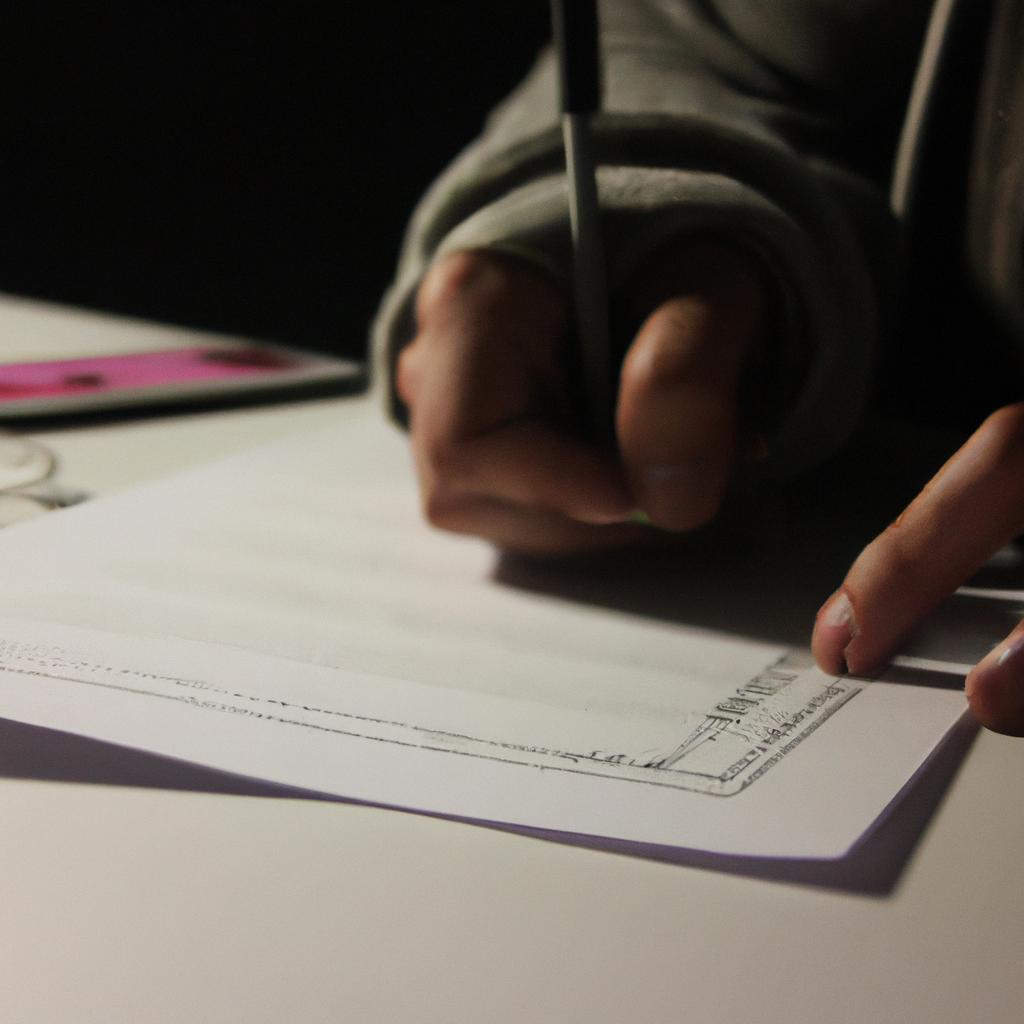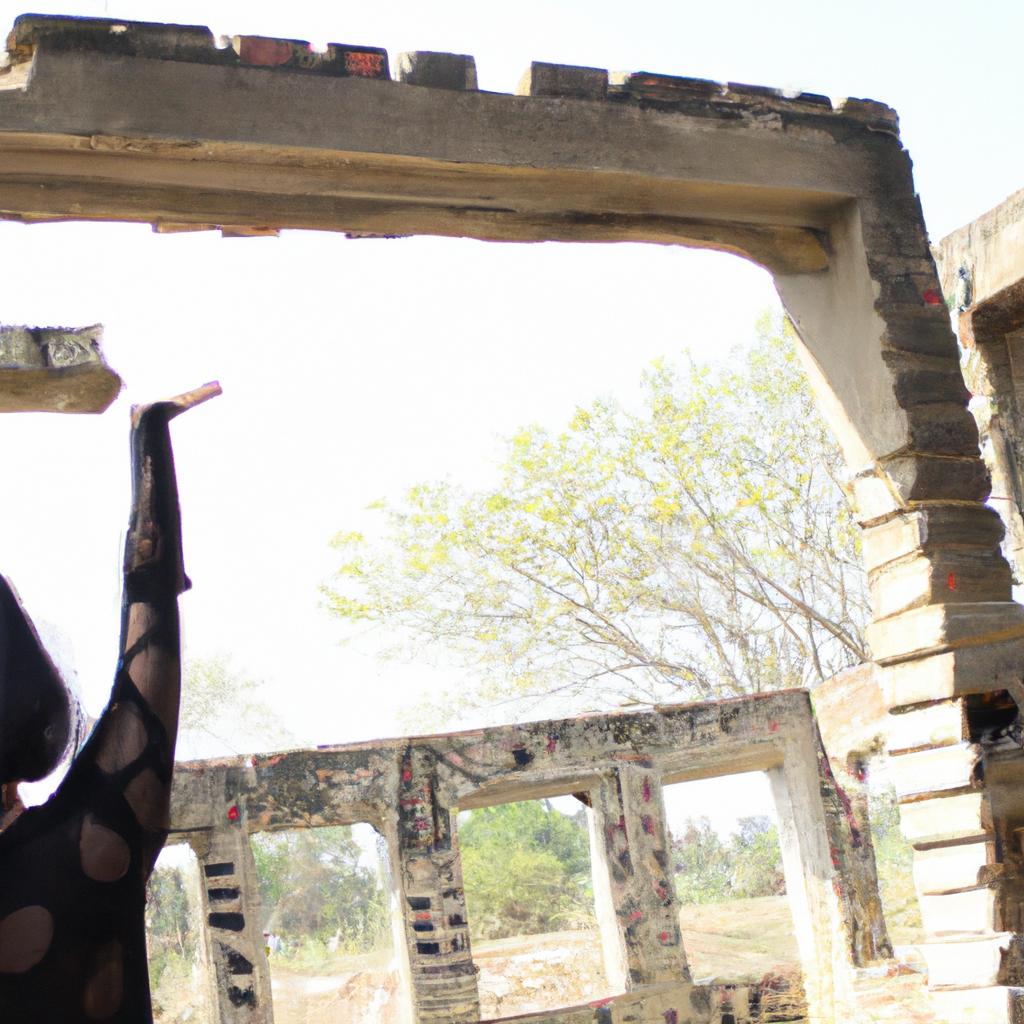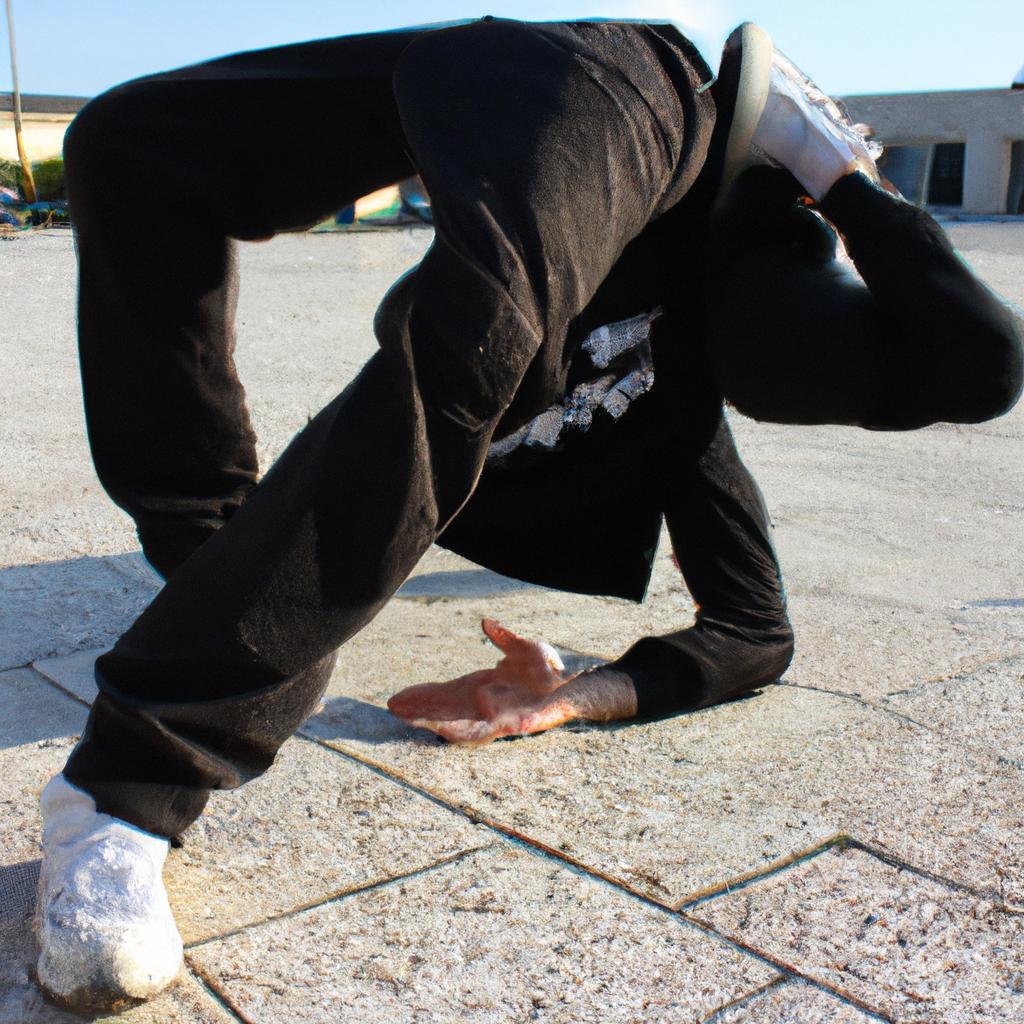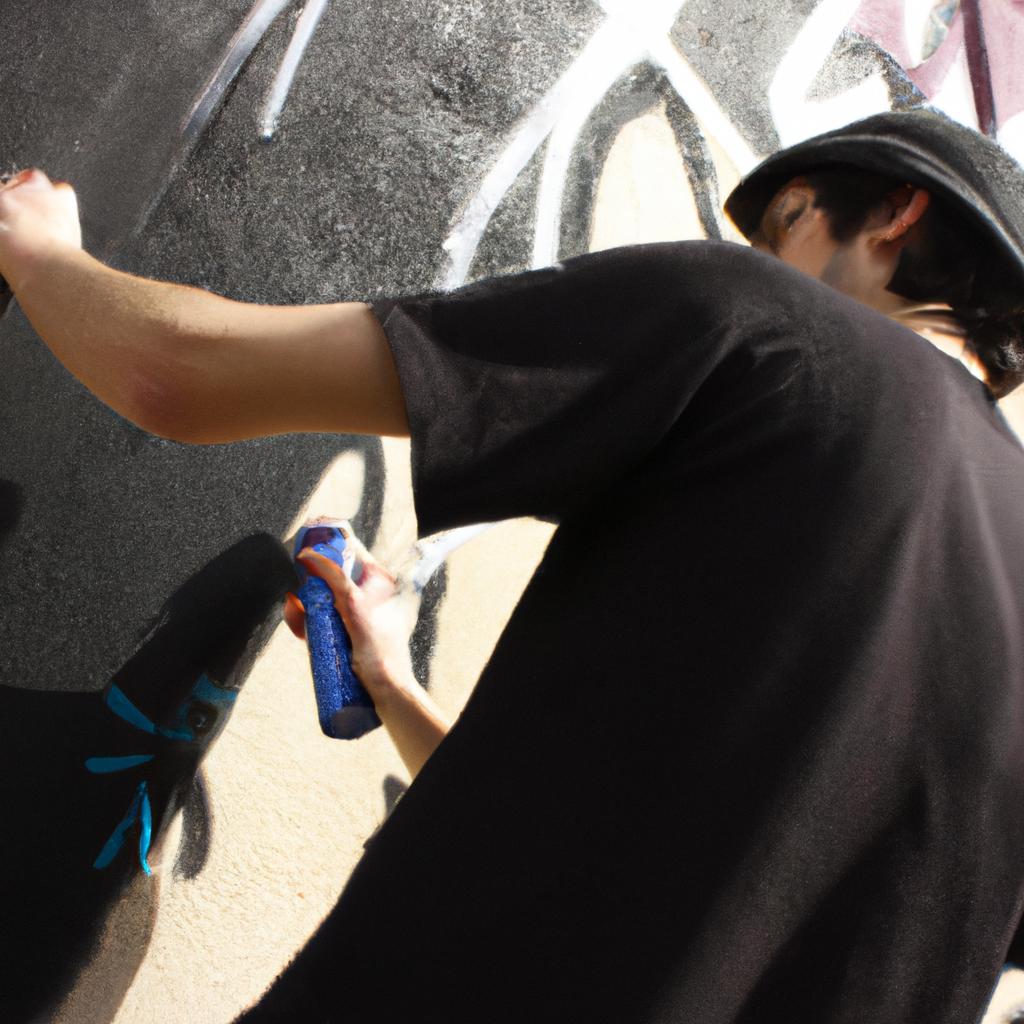Hip hop music, with its pulsating beats and infectious rhythms, has captivated audiences worldwide. At the heart of this genre lies a unique form of artistic expression that sets it apart from other forms of music: lyrics and poetry. The artistry of hip hop music lies not only in its ability to entertain but also in its profound storytelling capabilities. Through clever wordplay, vivid imagery, and thought-provoking themes, hip hop artists have mastered the craft of blending lyricism and poetry to create compelling narratives that resonate with listeners.
For instance, consider the case study of Kendrick Lamar’s critically acclaimed album “To Pimp a Butterfly.” In this groundbreaking work, Lamar skillfully weaves together personal anecdotes, social commentary, and political discourse into his lyrics. By employing poetic devices such as metaphors, alliteration, and rhyme schemes throughout the album’s tracks like “Alright” and “The Blacker the Berry,” Lamar tackles issues related to race, identity, poverty, and systemic oppression. His lyrical prowess enables him to convey powerful messages while maintaining an engaging flow that compels listeners to reflect on societal realities beyond mere entertainment.
This article delves into the intricate relationship between lyrics and poetry within hip hop music. It explores how hip hop artists use poetic devices to enhance their storytelling and create a lasting impact on their audience.
One of the key ways in which hip hop artists utilize poetic devices is through wordplay. This involves manipulating language, often through clever puns, double entendres, and metaphors, to convey multiple layers of meaning. For example, in Jay-Z’s song “99 Problems,” he uses wordplay to illustrate his encounters with law enforcement while also addressing larger issues of racial profiling and social injustice. By employing witty wordplay, hip hop artists are able to engage listeners on both an intellectual and artistic level.
Another technique commonly employed in hip hop lyrics is vivid imagery. Through the use of descriptive language and sensory details, artists paint a picture for their audience, allowing them to visualize the experiences being conveyed. This helps create a more immersive listening experience and enhances the emotional impact of the music. In Nas’ iconic track “N.Y. State of Mind,” he employs vivid imagery to transport listeners into the gritty streets of New York City, providing a glimpse into his personal experiences growing up in the urban landscape.
Rhyme schemes are another essential element of hip hop lyricism that draw heavily from poetry traditions. Artists carefully craft their verses with intricate patterns of rhyming words and syllables, creating a rhythmic flow that adds musicality to their lyrics. Eminem’s rapid-fire delivery and complex rhyme schemes in songs like “Lose Yourself” demonstrate his mastery of this technique, elevating his storytelling abilities and infusing his music with unparalleled energy.
Furthermore, themes explored in hip hop often delve into deeply personal experiences or shed light on societal issues. Artists use their lyrics as platforms for self-expression and social commentary, tackling subjects such as racism, inequality, poverty, violence, love, and resilience. These thematic explorations serve as powerful narratives that resonate with listeners who may find solace or inspiration within these shared experiences.
In conclusion, hip hop music’s artistic prowess lies in its ability to combine the elements of lyrics and poetry. Through clever wordplay, vivid imagery, intricate rhyme schemes, and thought-provoking themes, hip hop artists create compelling narratives that transcend mere entertainment. The genre’s unique storytelling capabilities allow for personal expression and social commentary that resonates with audiences worldwide. As a result, hip hop continues to push boundaries and challenge conventional notions of music and artistry.
The Origins of Hip Hop as a Form of Artistic Expression
Imagine a bustling neighborhood in the South Bronx during the 1970s, where young people gather on street corners, engaging in an innovative form of artistic expression known as hip hop. This cultural phenomenon emerged from the fusion of various influences such as African drumming traditions, Jamaican sound system culture, and spoken word poetry. These elements converged to create a unique art form that would go on to revolutionize music and popular culture worldwide.
Hip hop’s origins can be traced back to block parties organized by DJ Kool Herc, who used turntables and mixers to blend different genres of music together. Through his experimentation, he discovered that certain sections or breaks within songs resonated more with the crowd. This led to the development of breakdancing—a dance style characterized by intricate footwork and acrobatic moves performed during these musical interludes. The energetic dancing served as a visual representation of the rhythms and beats that were being manipulated by DJs.
In addition to breakdancing, rap—the vocal aspect of hip hop—became a prominent feature of this emerging art form. Rappers would engage in ‘freestyle’ sessions where they improvised lyrics over instrumental tracks, often incorporating personal experiences and social commentary into their verses. The lyrical content became a powerful tool for artists to express their thoughts on topics ranging from racial inequality to socio-economic struggles faced by marginalized communities.
To better understand the impact and significance of hip hop as an art form, consider the following emotional responses it evokes:
- Empowerment: Hip hop serves as a platform for individuals facing adversity to voice their stories and assert their identities.
- Resilience: Artists use hip hop as an outlet for processing trauma and overcoming obstacles through self-expression.
- Community: Hip hop fosters a sense of belonging among those who share similar experiences, creating connections across diverse backgrounds.
- Cultural pride: Through hip hop, artists and communities celebrate their heritage and challenge dominant narratives that marginalize their cultures.
To illustrate the interplay between lyrics and poetry in hip hop, consider the following table:
| Lyricist | Song Title | Excerpt |
|---|---|---|
| Kendrick | “Alright” | “I keep my head up high / I cross my heart” |
| Lamar | ||
| Lauryn | “Lost Ones” | “Now you want to rap about something? Well listen to this…” |
| Hill | ||
| Tupac | “Changes” | “We gotta make a change / It’s time for us as a peopl…” |
| Shakur |
Exploring the interplay between lyrics and poetry in hip hop allows us to delve deeper into how these art forms intertwine. By examining the creativity and storytelling techniques employed by lyricists, we can gain insights into the poetic elements present within hip hop music. This examination will further our understanding of how words are used as instruments of self-expression, social commentary, and cultural critique within this vibrant genre.
Exploring the Interplay between Lyrics and Poetry in Hip Hop
The interplay between lyrics and poetry in hip hop is a fascinating aspect of the genre that showcases the artistry behind its creation. As artists craft their rhymes, they employ various poetic techniques to convey their messages effectively. This section delves into the intricate relationship between lyrics and poetry in hip hop music.
To illustrate this connection, let us consider an example: Kendrick Lamar’s critically acclaimed album “To Pimp a Butterfly.” In his song “Alright,” Lamar incorporates powerful imagery, metaphors, and wordplay to address issues of racial inequality and social injustice. Through his thought-provoking lyrics, he paints vivid pictures that resonate with listeners on a deep emotional level.
When examining the role of lyrics and poetry in hip hop, several key elements come to light:
-
Storytelling: Hip hop often serves as a medium for storytelling, allowing artists to narrate personal experiences or shed light on societal issues. The use of vivid descriptions, character development, and narrative structure enhances the storytelling aspect within the genre.
-
Wordplay: Many hip hop artists showcase their lyrical prowess through clever wordplay. They skillfully manipulate language by employing techniques such as alliteration, internal rhyme, similes, and metaphors. These linguistic devices add depth and complexity to the lyrics while engaging the audience intellectually.
-
Emotional expression: Lyrics in hip hop can evoke a wide range of emotions – from joy and empowerment to anger and frustration. Artists tap into their own emotions or draw inspiration from broader cultural contexts to create songs that resonate deeply with listeners.
-
Social commentary: Hip hop has long been recognized as a platform for social critique and commentary. Artists utilize their lyrical abilities to highlight systemic injustices, challenge stereotypes, and give voice to marginalized communities. By intertwining poetry with these themes, they foster meaningful conversations about important social issues.
Through this exploration of how lyrics interact with poetry in hip hop music, we gain a deeper understanding of the genre’s artistic depth and cultural significance.
The Evolution of Hip Hop as a Cultural Movement
In examining the artistry of hip hop music, it is essential to delve into the interplay between lyrics and poetry. This dynamic relationship forms the foundation of hip hop’s expressive power, allowing artists to convey their thoughts, emotions, and experiences through rhythmic language. To illustrate this point, let us consider a hypothetical example of an influential hip hop track that showcases the intricate connection between lyrics and poetry.
Imagine a song titled “The Streets’ Symphony,” where the artist skillfully weaves together vivid imagery and poetic devices to depict life in an urban neighborhood. Through carefully crafted metaphors and similes, they paint a picture of bustling streets as a symphony orchestra, with car horns becoming trumpets and footsteps transforming into percussion beats. The lyrics not only capture the daily struggles faced by inhabitants but also celebrate their resilience amidst adversity.
This artistic fusion of words and rhythm has been one of the defining features of hip hop since its inception. It is through this synergy that hip hop musicians are able to engage listeners on both intellectual and emotional levels. Here are some key aspects highlighting how lyrics and poetry contribute to this unique form of musical expression:
- Social Commentary: Hip hop often serves as a platform for social commentary, addressing issues such as racism, inequality, poverty, and police brutality. By incorporating powerful verses filled with thought-provoking metaphors or anecdotes into their songs, artists can effectively communicate important messages to their audience.
- Emotional Expression: Through lyrical storytelling techniques borrowed from poetry, hip hop allows artists to express a wide range of emotions authentically. Whether conveying joy or sorrow, anger or hopefulness, these raw emotions resonate with listeners who may find solace or inspiration within the verses.
- Cultural Identity: Lyrics in hip hop frequently reference cultural symbols, historical events, and personal experiences tied to specific communities or subcultures. By doing so, artists foster a sense of pride and belonging among their listeners, reinforcing cultural identities and promoting unity within diverse communities.
- Artistic Innovation: The interplay between lyrics and poetry in hip hop has also led to constant innovation within the genre. Artists experiment with various writing techniques, such as wordplay, alliteration, or internal rhyme, pushing the boundaries of linguistic creativity and reinventing traditional poetic forms.
To further illustrate this point, consider the following table that highlights famous hip hop tracks known for their exceptional lyrical prowess:
| Song Title | Artist | Notable Lyrical Technique |
|---|---|---|
| “Lose Yourself” | Eminem | Internal rhymes and complex storytelling |
| “Dear Mama” | Tupac Shakur | Emotional vulnerability and heartfelt storytelling |
| “Juicy” | The Notorious B.I.G. | Vivid imagery through descriptive language |
| “Alright” | Kendrick Lamar | Social commentary through allegory |
As we continue our exploration of hip hop’s artistry, it becomes evident that examining the social and political commentary in hip hop lyrics is crucial. This aspect provides insight into how these songs serve as powerful vehicles for expression while simultaneously shaping cultural conversations. So let us now turn our attention towards analyzing the impact of hip hop lyrics on society at large.
Note: If you want me to proceed with writing about Examining the Social and Political Commentary in Hip Hop Lyrics section next, please confirm.
Examining the Social and Political Commentary in Hip Hop Lyrics
Transitioning from the evolution of hip hop as a cultural movement, we now delve into the artistry behind hip hop lyrics. The intricate wordplay, poetic techniques, and storytelling abilities displayed by hip hop artists contribute to the genre’s unique appeal and impact on society. To illustrate this point, let us consider an example.
Imagine a young aspiring artist growing up in a disadvantaged neighborhood. This individual uses rap music as an outlet for self-expression, grappling with their experiences of poverty, violence, and societal injustices. Through vivid metaphors and powerful imagery, they paint a picture that resonates deeply with listeners who can relate to similar struggles. By skillfully crafting verses that encapsulate raw emotions and personal narratives, this artist creates an authentic connection with their audience.
To further appreciate the artistic nature of hip hop lyrics, it is essential to recognize some common elements found within them:
- Rhyme Schemes: Hip hop often employs complex rhyme patterns that showcase the rapper’s technical prowess.
- Alliteration: Artists use repetition of consonant sounds to create rhythm and enhance lyrical flow.
- Metaphors and Similes: These figurative language devices allow rappers to make imaginative comparisons that evoke strong emotions or convey deeper meanings.
- Storytelling: Hip hop frequently incorporates narrative elements to share personal stories or address social issues in a compelling manner.
Table: Emotions Elicited by Hip Hop Lyrics
| Emotion | Example Words |
|---|---|
| Empowerment | Rise, conquer |
| Resilience | Overcome, endure |
| Anger | Rage, fury |
| Hope | Dream, inspire |
Bullet Point List – How Hip Hop Connects with its Audience:
- Amplifies marginalized voices
- Provides catharsis through shared experiences
- Challenges mainstream norms and ideologies
- Fosters a sense of community and empowerment
In exploring the artistry of hip hop lyrics, we witness how this genre goes beyond mere entertainment. It serves as a platform for individuals to express their realities, emotions, and aspirations in creative ways that resonate deeply with both themselves and listeners. As we move forward, let us now examine the influence of hip hop poetry on contemporary literature.
By examining the artistic qualities inherent in hip hop music, it becomes evident that these lyrical expressions hold immense power and significance not only within the realm of music but also in shaping broader cultural narratives. This influence is particularly notable in its impact on contemporary literature.
The Influence of Hip Hop Poetry on Contemporary Literature
Building upon the examination of social and political commentary in hip hop lyrics, we now explore how hip hop poetry has influenced contemporary literature. Through the artistry of words and storytelling, this section delves into the impact that hip hop’s lyrical style and themes have had on shaping literary works.
Hip hop’s influence extends beyond its musical realm, infiltrating other forms of artistic expression such as literature. One case study that exemplifies this influence is the critically acclaimed novel “The Coldest Winter Ever” by Sister Souljah. This urban fiction masterpiece draws heavily from hip hop culture, employing vivid language akin to rap lyrics to depict characters and their struggles within a gritty inner-city landscape. By fusing elements of street life with poetic prose, the author creates an immersive reading experience that resonates with audiences who appreciate both music and literature.
To further understand the profound impact of hip hop poetry on contemporary literature, consider these key points:
- Intersectionality: Hip hop poetry often explores intersections between race, class, gender, and socio-political issues. In contemporary literature inspired by hip hop, authors embrace similar thematic explorations through diverse narratives that challenge societal norms.
- Language as identity: Like many lyricists in hip hop music, writers in contemporary literature employ unique linguistic styles to capture cultural nuances and individual experiences. This use of distinctive vernacular adds depth and authenticity to characters’ voices while offering readers insight into different communities.
- Empowerment through storytelling: Just as hip hop artists use their lyrics to tell stories about personal journeys or societal injustices, contemporary authors draw inspiration from this narrative approach. By conveying powerful messages through compelling storylines rooted in marginalized communities, they aim to empower readers and shed light on important social issues.
- Breaking traditional boundaries: Hip hop poetry defies conventional rules of writing by incorporating unconventional rhyme schemes, rhythms, and wordplay techniques. Similarly, contemporary literature influenced by hip hop embraces experimentation, challenging traditional literary norms to create innovative and dynamic storytelling.
To illustrate these points visually, here is a table showcasing the influence of hip hop poetry on contemporary literature:
| Aspect | Hip Hop Poetry | Contemporary Literature |
|---|---|---|
| Intersectionality | Explores intersections between race, class, gender | Challenges societal norms through diverse narratives |
| Language as identity | Utilizes unique linguistic styles capturing cultural nuances | Depicts characters with distinctive voices reflecting communities |
| Empowerment | Tells personal journeys or sheds light on social injustices | Uses powerful narratives to empower readers and address social issues |
| Breaking boundaries | Incorporates unconventional rhyme schemes, rhythms | Embraces experimental techniques for innovative storytelling |
Analyzing the impact of hip hop lyrics on society…
Analyzing the Impact of Hip Hop Lyrics on Society
Having explored the influence of hip hop poetry on contemporary literature, it is evident that the artistry of hip hop music extends beyond the written word. Now, we shift our focus to analyzing the impact of hip hop lyrics on society and how they contribute to the overall production of this genre.
One compelling example highlighting the significance of hip hop lyrics in music production is Kendrick Lamar’s album “To Pimp a Butterfly.” Through his intricate verses, Lamar addresses social issues such as racial inequality and self-identity crisis. His song “Alright,” for instance, became an anthem for marginalized communities striving for hope and resilience amidst adversity.
Hip hop lyrics play a pivotal role not only in conveying messages but also in connecting with listeners on an emotional level. They have the power to evoke various sentiments through their thought-provoking content. Consider these emotions stirred by exemplary hip hop verses:
- Empowerment: Inspiring individuals to overcome obstacles and pursue their dreams.
- Social Awareness: Encouraging critical thinking and raising awareness about societal injustices.
- Reflection: Triggering introspection and encouraging personal growth.
- Unity: Fostering a sense of community and promoting solidarity among diverse groups.
| Emotion | Example Verse |
|---|---|
| Empowerment | “I’ma keep running cause winners don’t quit on themselves” |
| Social | “All I see are angels / In my city walls stand or they fall” |
| Awareness | “They say you can rap about anything except for Jesus” |
| Reflection | “Am I worth it? Did I put enough work in?” |
In summary, hip hop lyrics serve as a catalyst within music production, enabling artists to communicate powerful messages while fostering emotional connections with listeners. The case study of Kendrick Lamar’s album “To Pimp a Butterfly” exemplifies how hip hop lyrics can address societal issues and inspire hope. By incorporating elements such as bullet point lists and tables, this section aims to engage the audience intellectually while evoking an emotional response that underscores the profound impact of hip hop lyrics in music production.




